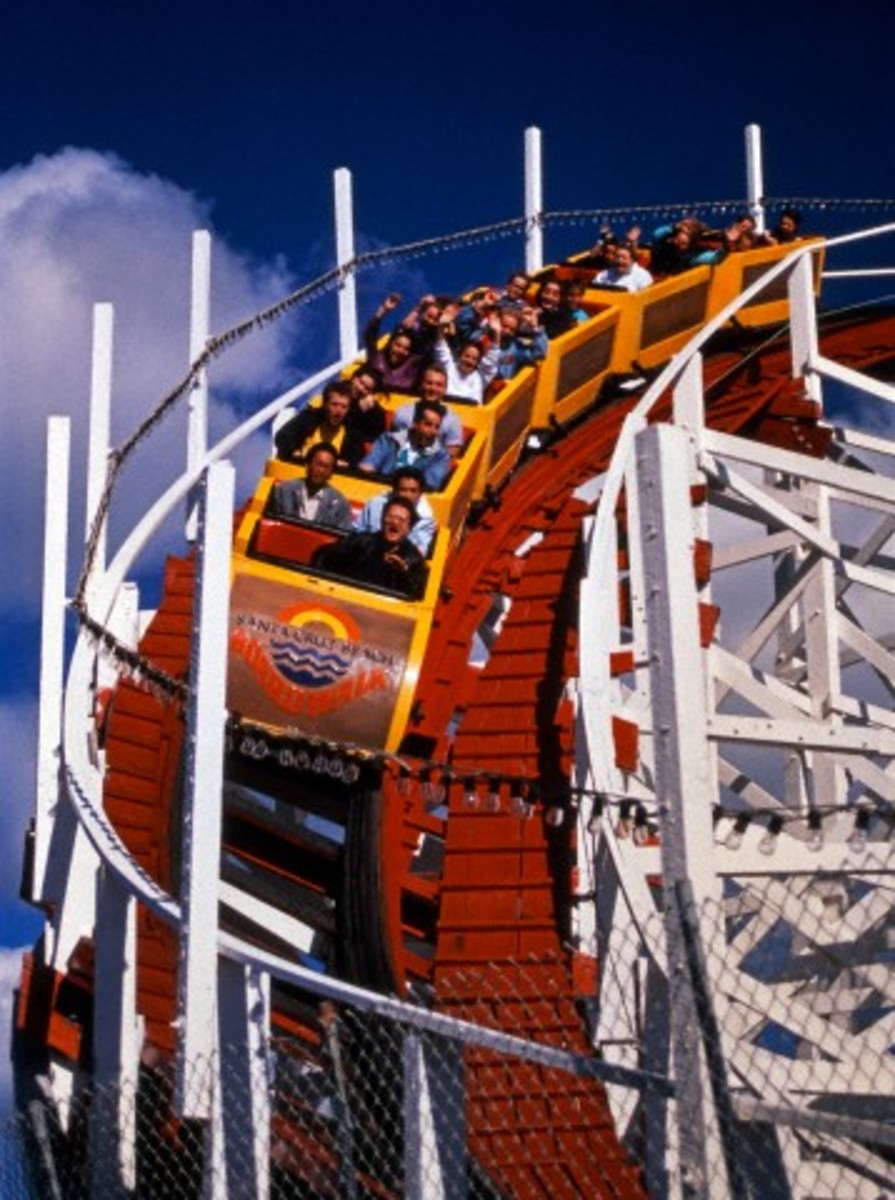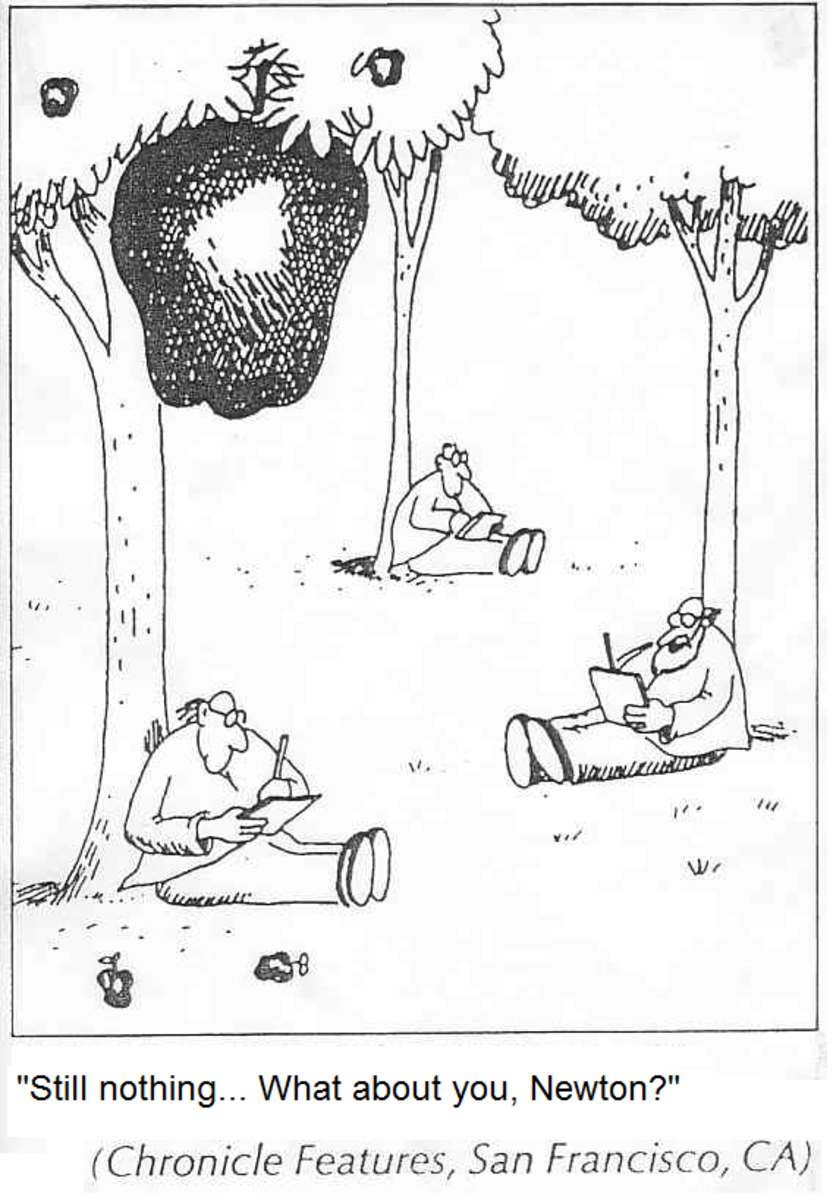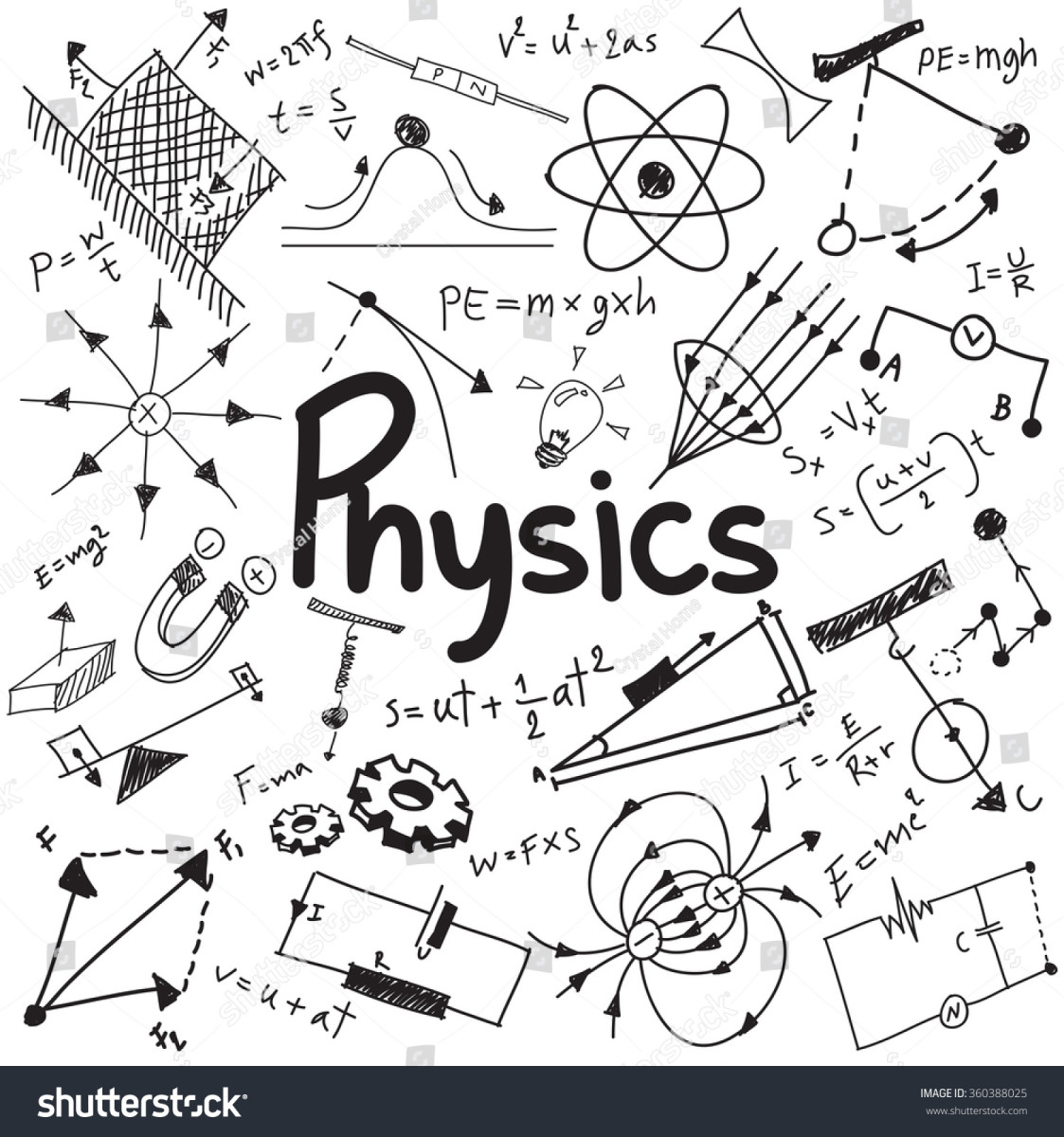Newton's Three Laws of Motion and How to Use Them
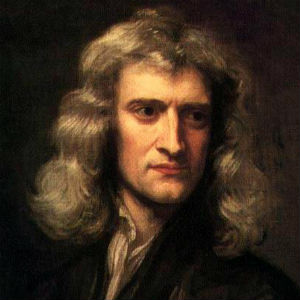
The Three Laws of Motion was created by Sir Isaac Newton, who was born in 1642 in England. He was a legendary mathematician and physicist. Legend says that while pondering an apple that fell from an apple tree one day, he came up with his theories on gravitational forces. He recorded his findings in his three book series called Philosophiae Naturalis Principia Mathematica (Mathematical Principles of Natural Philosophy). He is also responsible for creating the first reflecting telescope, formulating an empirical law of cooling, and contributing to studies on the speed of sound. Out of all of his findings and studies, he is most known for his three laws of motion that scientists all over the world continue to use as the basis of motion in physics.
Newton's First Law of Motion
Newton's first law of motion states:
- Every object continues in its state of rest, or of uniform velocity in a straight line, as long as no net force acts on it.
A shorter, more popular saying of this law is "an object at rest will stay at rest and an object in motion will stay in motion unless acted upon by an outside force."
This can be demonstrated by watching a bug in a car. If you've ever been unfortunate enough to have a fly in your car while your driving, you may have noticed that even though the car is going forward, the fly is buzzing around in the car as if the car wasn't moving. That's because although the car has a force exerted on it, the fly does not. If the fly were to land on a seat (ewww!) then it would take on the velocity of the car, and the friction between the fly's legs and the car seat would then propel the fly forward.
If Superman flew into space and were to throw a rock, the rock would continue to move in the direction that Superman threw it and at the same speed that he threw it because there is no gravity in space. Since there is no gravity, there is nothing to stop the rock so it will continue it's path until it crashes into a meteor or enters the gravitational pull of a planet or moon.
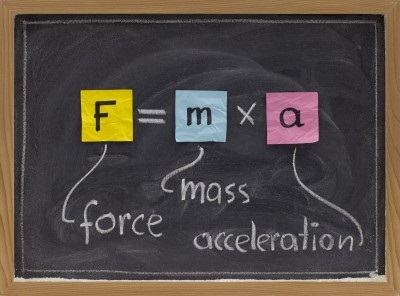
Newton's Second Law of Motion
Newton's second law of motion states:
- The acceleration of an object is directly proportional to the net force acting on it, and is inversely proportional to its mass. The direction of the acceleration is in the direction of the net force acting on the object.
This law can be summed up in a mathematical equation:
- ∑F = ma
where '∑F' stands for the sum of all forces being applied upon the object, 'm' stands for the mass of the object, and 'a' stands for the acceleration of the object. The unit of force is the Newton (N) which comes from kilograms (kg) times meters per second squared (m/s2).
Calculating the force of an object at rest
When talking about an object on earth that is at rest, it is very easy to confuse mass and weight, but the difference is that mass is the measure of how much matter is in an object and weight is a force that is acting on the object.
It is also important to remember that the acceleration of an object at rest is the acceleration due to gravity (9.8 m/s2). You may wonder how an object has an acceleration when it's not moving. When calculating force, you must calculate the sum of all forces. There will be a force in the x direction (horizontally) as well as in the y direction(vertically). In some cases, if an object is on an incline, you must compensate for the angle that the object is at.
Here is an example using Newton's second law on an object at rest. Imagine if you had a car that weighed 1000kg and is not moving.
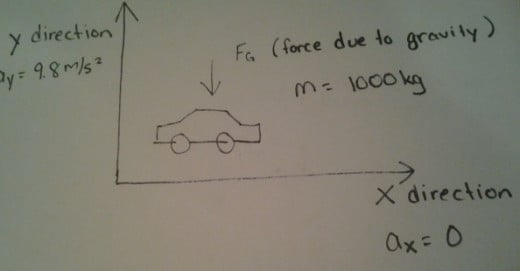
As you can see from the picture, you must set up a coordinate system so that you will know your 'x' direction and your 'y' direction. Make sure you set your 'x' coordinate to be parallel with the ground.
Once you've set up your coordinate system, you can calculate the force in each direction. In the 'x' direction, the acceleration is zero, so we have:
- Fx = max = (1000kg)(0 m/s2) = 0N
There is no force in the 'x' direction because the car is not accelerating. Do not confuse acceleration with velocity. Even if the car was moving at a constant velocity, the acceleration would be zero so there would still be no force in the 'x' direction.
Now calculate the force in the 'y' direction:
- Fy = may = (1000kg)(9.8 m/s2)= 9800N
If there were a force in the 'x' direction, you would use the Pythagorean Theorem to add the two force components together:
- ∑F = √(02 + 98002) = 9800N
But as you can see, since the force in the 'x' direction is zero, the total force is simply equivalent to the force in the 'y' direction.
Newton's Third Law of Motion
Newton's third law of motion states:
- Whenever one object exerts a force on a second object, the second object exerts an equal force in the opposite direction on the first.
People sometimes paraphrase this as "for every action there is an equal but opposite reaction".
We can use the car in the example for Newton's second law to demonstrate this law. The car pushed on the ground with a force of 9800N. In return, the ground also pushes on the car with a force of 9800N.
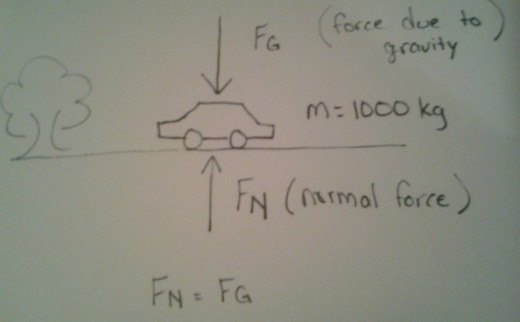
The force that is pushed back onto the car by the ground is called the normal force. The normal force will always be equal to the force of the object as long as the object is not on an incline.
Here is another example. If you have a have an 18kg child standing on a balcony, the child's acceleration in the 'y' direction would still be 9.8 m/s2 due to gravity. So the force of the child on the balcony would be
- 18kg x 9.8 m/s2 = 176.4N
and the balcony would be pushing back on the child with the same amount of force. The force from the balcony on the child is the normal force. If there were no force pushing back on the child, the child and the balcony would simply fall to the ground.
Having a good, basic understanding of Newton's three laws of motion will open a lot of doors for you as far as physics is concerned. Isaac Newton was an extraordinary physicist and by using his laws as well as more knowledge that you gain during your scientific career, you or I may be the next legendary physicist to have our names written down in history.
Read more of my hubs:




